|
These are sample images I shot during my ten-day experience with this camera, before handing it over to the friend for whom it was purchased. See also my full A460 review.
As always in my sample pages, at the left I'm showing the full frames, reduced and re-sharpened, but without any other image manipulation (cropping, tonal adjustment, color changes). At the right you find small fragments of these images (as marked in full frames), in the 1:1 pixel size, and without any manipulation (except for being cropped, obviously). The camera was saving images as "superfine" (1:6 compression) JPEG files.
Let me stress that these 1:1 samples of five-megapixel images correspond, when viewed on a 90 dpi monitor, to the image being printed 21.6x28.8" (55×73 cm), which should be usually viewed from about 3-ft (one-meter) distance. This greatly exaggerates any imperfections.
|
|
Walk-around snapshots
Right out of the box, I took the camera for a short walk around the Bowie Town Center outdoor mall in Maryland. Just to play things safe, I switched to the "Manual" (really: program) mode with a -0.3 EV exposure compensation I often use in sunlit scenes to preserve highlight detail. I also set the white balance manually to the "sunny" icon.
|
|
|
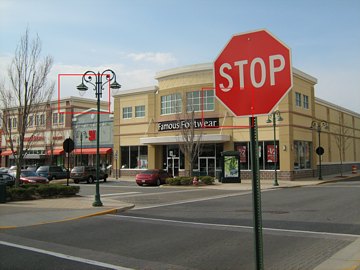
|
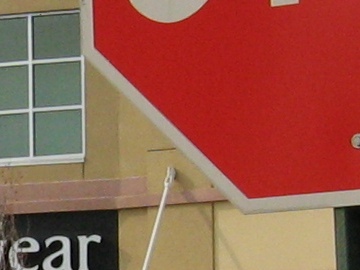
|
|
|
F=5.4 mm (38 mm EFL), program exposure with -0.3 EV compensation: 1/200 s at F/8, ISO 80. Manual WB at "sunny", contrast at "low"
|
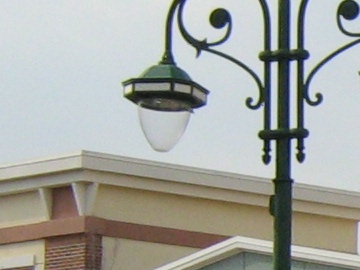
|
|
This one was shot in the "Manual" mode, with -0.3 EV exposure compensation. The sharpness is very good; importantly, there are no oversharpening artifacts visible. Just a hint of chromatic aberration in the high-contrast lamp contour.
An exemplary performance (not just at a price). I wouldn't be afraid to print this image at 9×12" (23×30 cm) or even larger.
The unaltered, full-size image file can be found here.)
|
|
The next shot has been taken at the long end of the zoom, and the sunlight was diffused, if still quite bright.
|
|
|
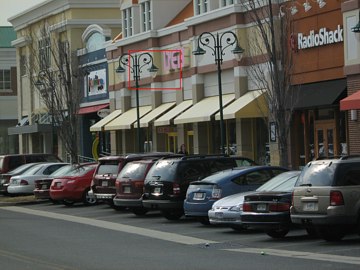
|
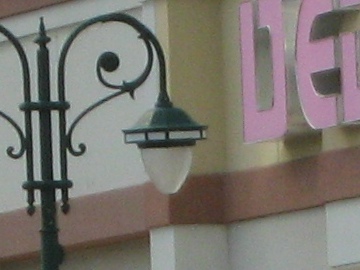
|
|
|
F=21.6 mm (152 mm EFL), program at -0.3 EV: 1/400 s at F/5.8, ISO 80; other settings as above.
|
|
There is less contrast here, not just because of the more diffused light: this happens often at longer focal lengths. I am sure that with a lens hood the picture would have more punch, but nobody cares about lens hoods for compact cameras. Also, I've been using low in-camera contrast setting (which may look less pleasing at the first glance, but preserves detail in highlights and shadows). Hints of excessive sharpening at the lamp, but not bad at all.
My license plate, full sun
Here is one subject at three different focal lengths, to check the lens performance near the image center. Once again, manual "sunny" WB and -0.3 EV compensation were used in these samples.
|
|
|
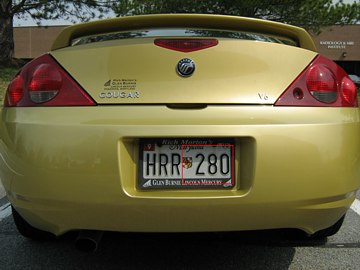
|
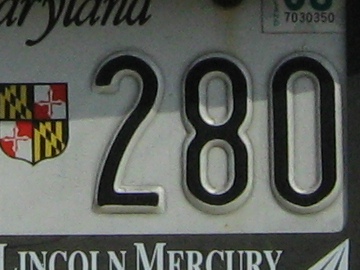
|
|
|
F=5.4 mm (EFL=38 mm), program (-0.3 EV): 1/250 s at F/8, ISO 80
|
|
|
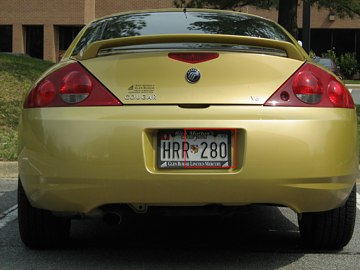
|
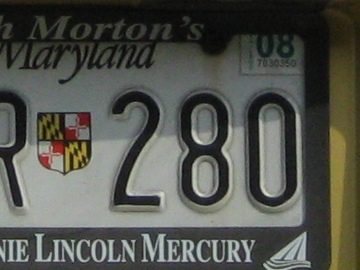
|
|
|
F=11.8 mm (EFL=83 mm), program (-0.3 EV): 1/800 s at F/4, ISO 80
|
|
|
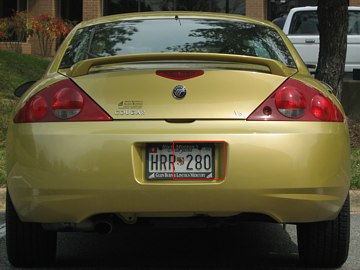
|
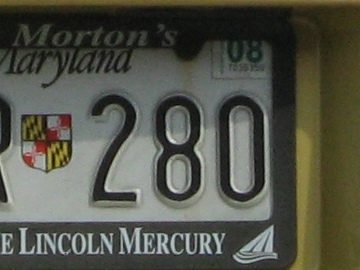
|
|
|
F=21.6 mm (EFL=152 mm), program (-0.3 EV): 1/320 s at F/5.8, ISO 80
|
|
The sharpness, at image center at least, is very good (as I checked on other samples, it is also good near image edges, either, but the center 50% is what really counts in most applications). At the full zoom it drops down a bit, still remaining in a respectable range. Definitely, something I wouldn't expect from a camera in this price range.
|
|
While shooting the license plate, I switched the camera to the close-focus mode (not the "super macro"!) and took another picture:
|
|
|
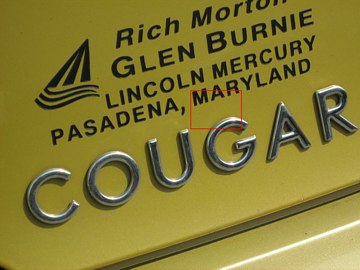
|
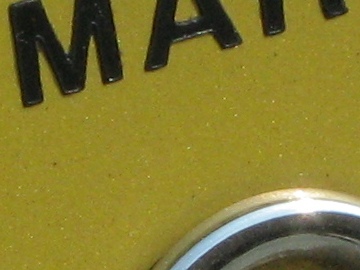
|
|
|
F=21.6 mm (EFL=152 mm), program (-0.3 EV): 1/500 s at F/5.8, ISO 80
|
|
A strong performance in this mode, too (it allows you to shoot from 25 cm at the tele end).
The Crofton lake, full auto
Every time a put my hands on a new camera, I shoot this subject, as it is right off my patio door.
Here I decided to switch the camera to the full-auto mode, where no adjustments (in particular, exposure compensation or WB settings) are available. All I have to do here is to point and press the big, shiny button (well, I've put the camera on a tripod, just to avoid any camera shake snafus).
|
|
|
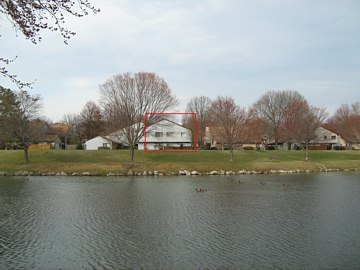
|
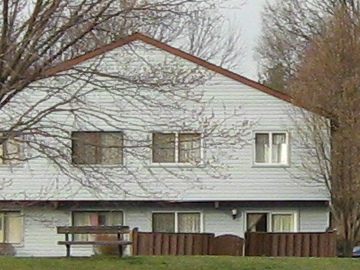
|
|
|
F=5.4 mm (EFL=38 mm), full auto: 1/500 s at F/2.8, ISO 80.
|
|
|
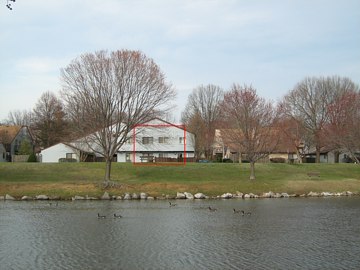
|
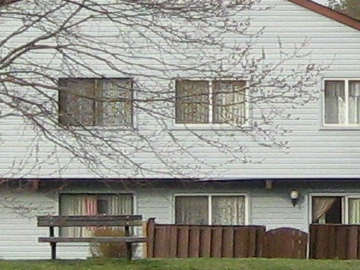
|
|
|
F=8.1 mm (EFL=57 mm), full auto: 1/400 s at F/3.5, ISO 80.
|
|
|
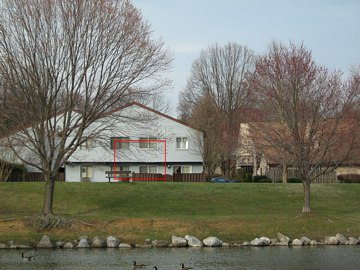
|
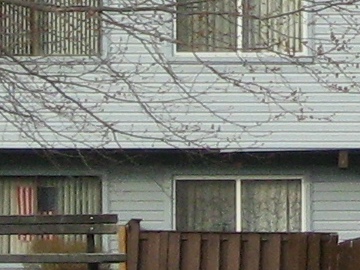
|
|
|
F=14.4 mm (EFL=101 mm), full auto: 1/250 s at F/4.5, ISO 80.
|
|
|
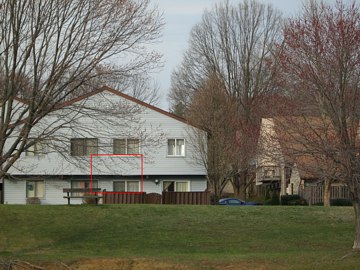
|
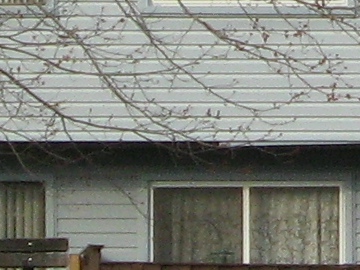
|
|
|
F=21.6 mm (EFL=152 mm), full auto: 1/200 s at F/5.8, ISO 80.
|
|
There is not much to criticize here: the exposure and colors are OK in the full-auto mode, although I would still prefer to use -0.3 EV of compensation. The camera also overdid removing the reddish cast of the late-afternoon sunlight; that's why I prefer to set the white balance by hand. Right after this series, I shot another one, this time with manual WB set to "sunny" and a -0.3 EV exposure adjustment. I'm not going to tax your patience with the whole set; here is just the picture at the longest focal length, so that you may compare it against the one immediately above:
|
|
|
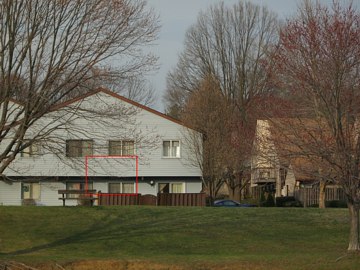
|
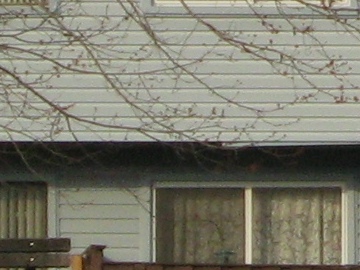
|
|
|
F=21.6 mm (EFL=152 mm), program (-0.3 EV): 1/320 s at F/5.8, ISO 80, WB at "sunny".
|
|
Well, judge for yourself; this may be a matter of taste. I prefer my late-afternoon images to be warmer; I also like most to be a bit darker than those shot at default settings of most cameras.
Generally, my lakeside session confirmed, again, unexpectedly strong performance of the camera — the lens in particular. True, a scrutiny of full-size images shows some sharpness fall-off in the outer 15% of the frame width and height, and the corners can show visible chromaric aberration at steep tonal transitions (dark branches against bright sky), but the former is not strong enough to be objectionable, and the latter — only mildly so.
More samples — Virginia's Eastern Shore
The next day after the camera arrived by mail, I had to make a business trip to NASA/Langley, near Norfolk, Virginia. I decided to take the scenic route via the Eastern Shore (that's the Delaware Peninsula for those who do not live here), and took the A460 along. There is always something to take pictures of, when you are driving down Route 13 to the Chesapeake Bay Bridge/Tunnel. Here are some snapshots from the road.
The fist two show, again, the difference between the full auto mode and the program mode with exposure compensation and manual WB.
|
|
|
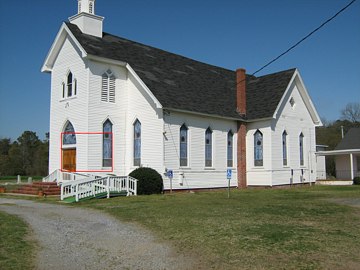
|
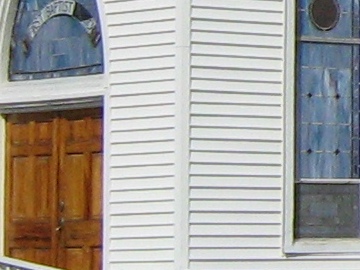
|
|
|
F=5.4 mm (EFL=38 mm), full auto: 1/500 s at F/8, ISO 80.
|
|
|
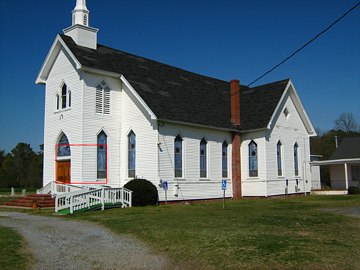
|
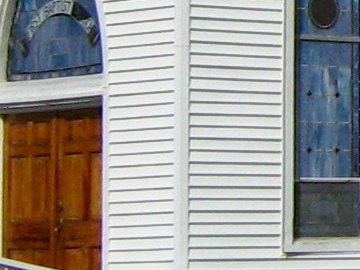
|
|
|
F=5.4 mm (EFL=38 mm), program (-0.3 EV): 1/640 s at F/8, ISO 80, WB at "sunny".
|
|
I have yet to find a camera whose exposure automation would always agree with what I want from the picture, and the A460 is no exception here. While the first image is OK, the second one is better. By the way, there is a hint (but just a hint) of chromatic aberration where the white church wall meets the dark trees; you can check that in the full-size image (the second version).
Another shot from the Eastern Shore shows the barrel distortion of the lens at the widest zoom setting to be quite significant; you may also clearly see the chroma noise in the shadows at ISO 80 (the amount does not worry me a bit):
|
|
|
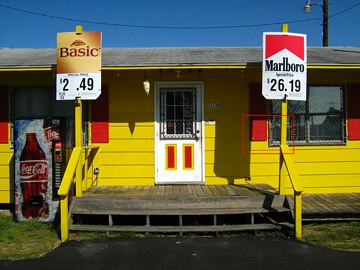
|
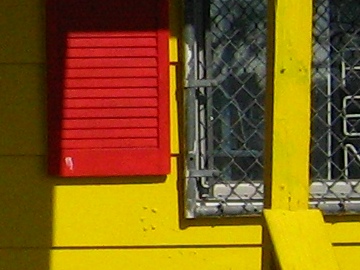
|
|
|
F=5.4 mm (EFL=38 mm), program (-0.3 EV): 1/500 s at F/8, ISO 80, WB at "sunny".
|
|
Flash indoors
I have to be really desperate to use a built-in flash on any camera. No wonder that in the ten days with the A460 I took just one flash picture, having forgotten that some would come handy for this review. Oops, here it is.
|
|
|
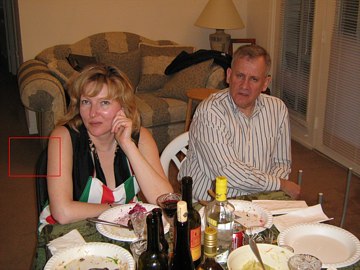
|
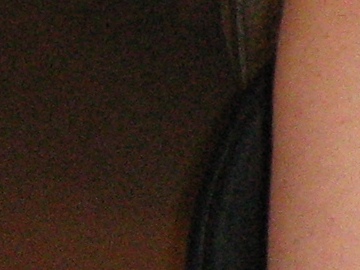
|
|
|
F=6.7 mm (EFL=47 mm), full auto: 1/60 s at F/3.2, ISO 200.
|
|
As the built-in flash is quite feeble, the camera raised the sensor gain to ISO 200; this brought in more noise, shown in the 1:1 sample. The Auto WB balance did not do the best job in the mixed light (yes, at ISO 200 the incandescent light adds quite a bit), but this cannot be avoided. The image is still OK (as good as any weak, built-in flash would do under circumstances) and can be printed up to 8×10" just fine.
|
|
Close-up
This is a picture of my Western belt buckle (about 10 cm across), shot in diffused window light, with a piece of white paper used as a reflector to soften the contrast. The camera was mounted on a mini-tripod.
|
|
|
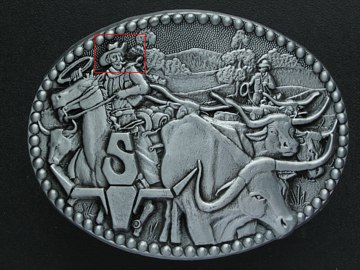
|
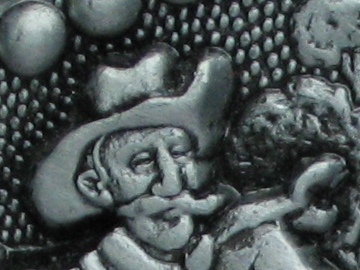
|
|
|
F=14.4 mm (EFL=101 mm), program (-0.3 EV): 1/15 s at F/4.5, ISO 80, WB at "sunny".
|
|
A respectable job, although I should have set the WB to "cloudy" to get warmer colors (next time!). While a dedicated macro zoom on an SLR will deliver a better image, such lens costs three or four times more than the whole A460.
Macro
Here is a picture taken in the "super macro" mode, which is how Canon refers to a macro mode. This is about as close as you can get: the field of view is about 17 mm across, and the watch was about 1 cm away from the front of the lens, hard to avoid shadows. Of course, a tripod is obligatory in such situations.
|
|
|
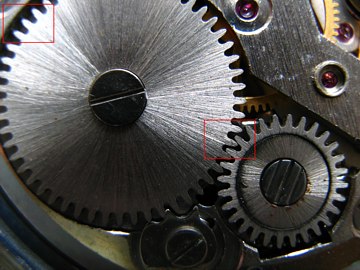
|
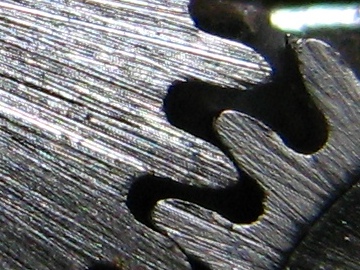
|
|
|
Super Macro mode: program (-1 EV), 1/20 s at F/2.8, Auto WB.
|
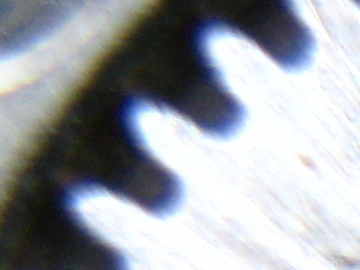
|
|
As you can see, the image is quite sharp in the center, and quite awful in corners (yes, I've checked all four to make sure that this is not a focusing problem).
This, again, is common to most of the "super macro" modes I've tried in various compact cameras.
|
|
Conclusions
The A460 is, when used properly, capable of delivering very pleasing images. The lens is sharp enough for 9×12" prints, colors are vibrant yet natural, and the noise under control, at least at the lowest ISO setting. For more, see the Bottom Line of my User Report.
|
|
Back to the A460 User Report.
|



































